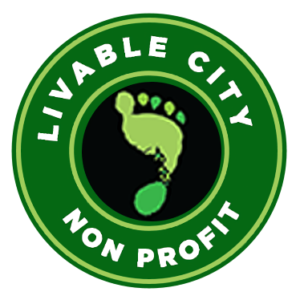For many decades, transportation planning in San Francisco was focused almost entirely on the automobile, and walking, cycling, and public transit were marginalized. We need to put sustainable modes at the center of our transportation plans, and replace “predict and provide” models of traffic and parking planning with ones that take into account the potential of better pricing and management, and that strengthen the role of alternatives to the private automobile.
It’s a truism that land use planning and transportation planning are inseparable, but in practice, transportation planning in San Francisco lags far behind land development. San Francisco needs to commit to the plans it has already made, and commit to planning, and building, needed neighborhood transportation improvements.
Many of the biggest new developments planned or under construction – Mission Bay, Hunters Point Shipyard, and Treasure Island – are throwbacks to the automobile-centered planning of the last decade, and need to be re-thought if they are to contribute to a more livable and sustainable San Francisco.

Sustainability also needs to be at the heart of our planning. Land Use and transportation plans must address climate protection, pollution and waste reduction, preserving and restoring biodiversity and habitat, and stewarding urban waters and restoring the health of our streams, lakes, groundwater, wetlands, bay, and ocean.
In the 19th century, public health was at the center of land use planning, and we are working to restore planning’s focus on improving mental and physical health.
Land use and transportation planning should support a diverse and robust city economy, which allows local businesses and sustainable manufacturing to thrive in San Francisco.
Plans must also address equity. Land use planning must address San Francisco’s housing affordability crisis, neighborhood plans should plan for equitable access to transportation, open space and parks, community facilities, and essential services. Our transportation plans must ensure sustainable mobility for all San Franciscans, while preventing the burden of our transportation choices, including traffic danger, noise, pollution, and degraded public spaces, to continue to fall on San Francisco’s poorest and least automobile-dependent neighborhoods.
Planning tends to focus on the material and quantifiable, but livability includes important qualitative factors that ought not be marginalized. Our planning should focus on, and foster, greater happiness. As we plan the future of our neighborhoods, their beauty, history, and character must be taken into account.
Current Projects

- Neighborhood Planning. Livable City helped shape most of the City’s recent neighborhood plans, including those for Market & Octavia, Balboa Park, The Mission, Tenderloin, and SoMa. We are working to ensure that neighborhood transportation and open space projects in these areas get built, and that the City maintains its commitment to neighborhood planning.
- Revise San Francisco’s Planning Code. At over 2,300 pages, San Francisco’s Planning Code, the blueprint for building and development in San Francisco, is in need of cleanup and revision. Livable City has been leading the effort to revise and update the code for clarity legibility, to remove outdated requirements – like minimum parking requirements in transit-rich areas – and to strengthen its provisions for permitting housing in transit corridors, pedestrian-oriented urban design and streetscapes, sustainability, and securing public benefits from development.
- Planning for Health. Livable City worked with San Francisco’s Health Department to create their Healthy Development Tool, and is advocating for a greater role for health and safety in land use and transportation planning.
- Planning for Sustainability. Livable City authored San Francisco’s Climate Protection ordinance, and is working to integrate climate change, watersheds, local food production, sustainable transportation, and habitat protection into San Francisco planning.
- Post-Redevelopment. Since the State dissolved redevelopment agencies in 2012, Livable City has worked to ensure that the City’s redevelopment plans are updated and integrated into the city’s Planning Code, and that the Redevelopment Agency’s planned investments in affordable housing, sustainable transportation, and public open spaces can be sustained.
- Sustainable Production, Distribution, and Repair. We are working with SF Made and others to ensure that San Francisco’s planning and zoning support and foster the city’s diverse production, distribution, and repair businesses, while maintaining neighborhood livability.




